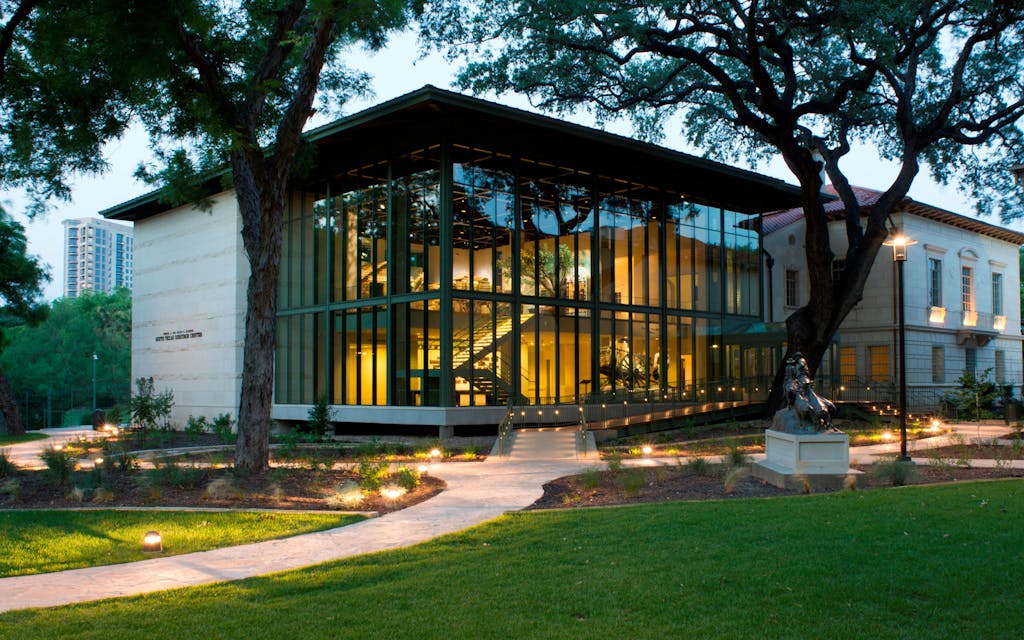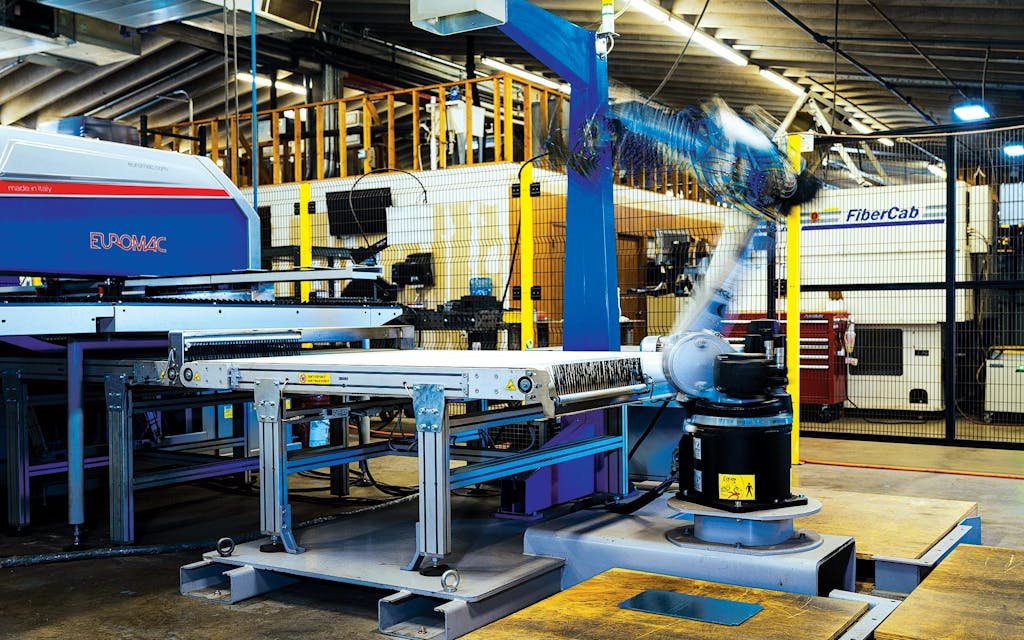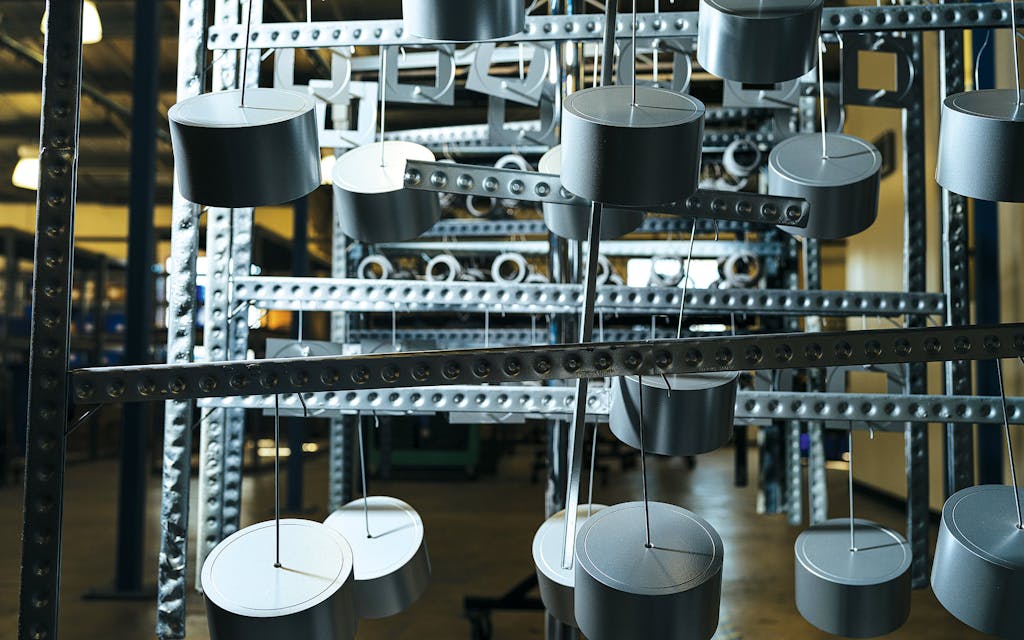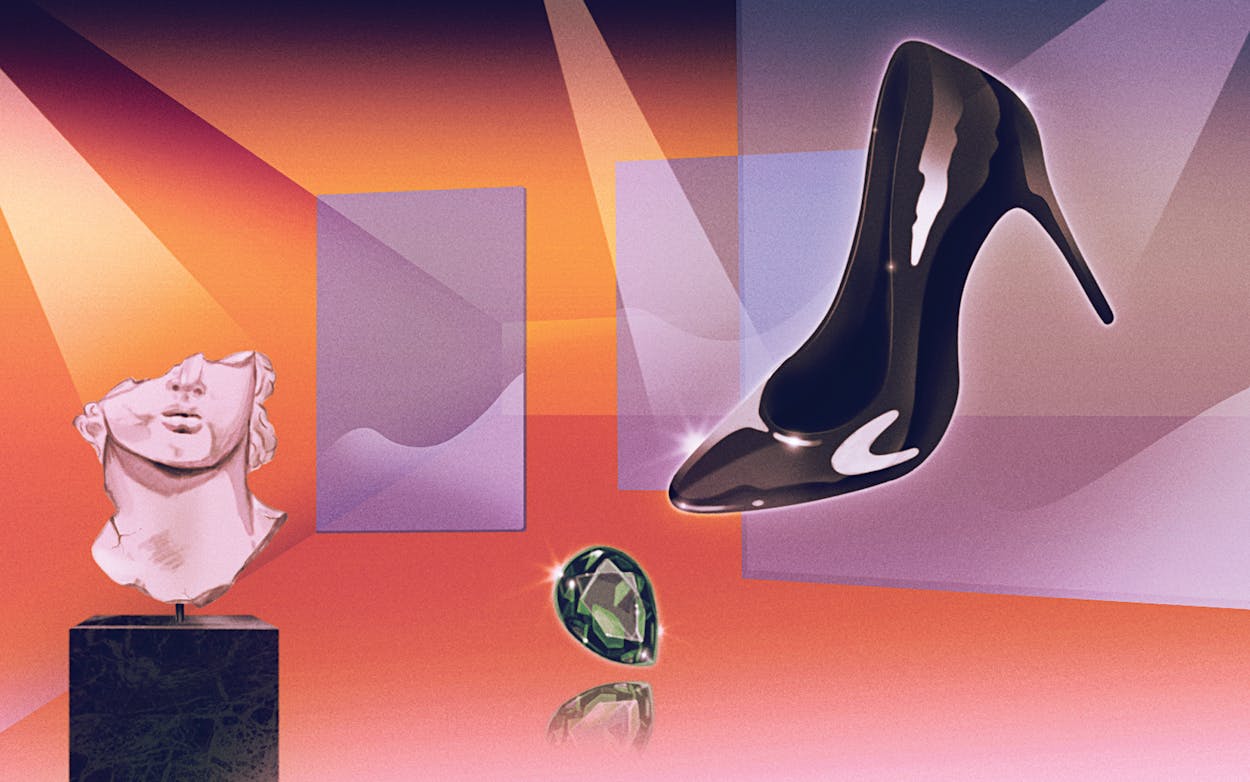When Alexandra Mathews was a fourth grader in San Antonio, she and her classmates were assigned to create their own mock magazines. Hers featured an interview with Estée Lauder, the self-made cosmetics magnate. Lauder was in her eighties, an international icon whom Time magazine would later name as the only woman on its list of the twenty most influential business geniuses of the twentieth century. Alexandra thought nothing back then of landing such a high-profile subject—Lauder was just one of the many glamorous figures in her parents’ orbit—but today, in her early forties, she can still picture her teacher’s disbelief.
It’s hard to overstate the Mathews family’s stature in the design world. Alexandra’s father, Gilbert Mathews, is a San Antonio entrepreneur whose family once owned the legendary local department store Frost Bros., which joined Neiman Marcus and Sakowitz in bringing the world’s finest fashions to Texas. Today, Gilbert is CEO of Lucifer Lighting, a maker of high-end fixtures that was founded in 1979 and has grown into one of the most significant Texas companies that most Texans have never heard of. Alexandra’s mother, Suzanne, is also a Lucifer executive, as well as a noted contemporary-art collector and former gallerist.
Lucifer’s products have lit up some of the world’s most fashionable and fastidious institutions—stores such as Apple, Cartier, Gucci, and Tiffany, among others; museums from Manhattan to San Francisco (and points between, including San Antonio’s McNay Art Museum, Ruby City, and Witte Museum); and some of the finest restaurants, including Eleven Madison Park, in New York City, and the French Laundry, in Napa Valley. Even British royals have sashayed about in Lucifer’s glow, at Windsor Castle. The company’s name, it should be noted, is a reference to the Latin for “bearer of light,” not to the fallen angel and master of hell.


The Mathews family’s old department store was equally influential. Though it eventually grew into a chain with locations at numerous malls, the original Frost Bros., on Houston Street in downtown San Antonio, was always the heart of the enterprise. It included a fur shop, a milliner, a “precious jewels salon,” and lavish displays of decor.
Lucifer’s headquarters occupies a former Pace Picante Sauce plant on the largely industrial East Side of San Antonio, where nobody barreling past on Interstate 35 would guess at the tastemaking that’s happening inside. The story of how Frost Bros. rose and fell, and how Lucifer rose in its wake, is a Texas legend that has maintained a relatively low local profile even as the Mathews family has earned a dedicated following globally. It’s a brand reputation that’s primed to grow in the wake of the company’s opening of a two-story, art-filled showroom last October in Manhattan’s Tribeca neighborhood, a pocket of the city home to some of the world’s biggest celebrities. (Think Beyoncé, Ryan Reynolds, Taylor Swift.)
But one recent sunny morning in San Antonio, Gilbert, Suzanne, and Alexandra and her younger sister Roselyn sat around a table loaded with art books in Gilbert’s office to discuss why keeping things understated suits their tastes just fine.

The tale of Lucifer goes back to the early thirties, when Sylvan Lang, Gilbert’s maternal grandfather and a prominent San Antonio attorney, held a minority ownership stake in a department store called Blum’s, which occupied a four-story building downtown that the San Antonio Light described as “one of the handsomest and most distinctive in the entire South.” Blum’s was acquired by a women’s specialty store down the street named Frost Bros., and the combined enterprise opened to the public in 1933 with an all-day orchestra concert and 150 salespeople. By 1945, after the founding Frost brothers had both died, Sylvan and his brother Gilbert bought out the Frost family entirely.
Gilbert Lang turned out to be a masterful merchant—a showman with great taste—and Sylvan a savvy dealmaker. Together they’d invested in other enterprises—movie theaters, oil and gas operations—but the store became the family’s crown jewel. Great fortunes had risen in Texas over the preceding years, and the brothers established relationships with New York City fashion barons eager to tap the
new market.
Wealthy shoppers would make pilgrimages to Frost Bros. from the sprawling ranches of South Texas or up from Mexico. Gilbert Mathews’s father was fond of recounting that Lyndon Johnson shopped there for luggage when he started “flying private” (his words for traveling on Air Force One), and a stylist from the Frost salon would head to Johnson City to do Lady Bird’s hair. Frost Bros. was the first store where Estée Lauder made a personal appearance to meet customers and do makeovers herself, something that became a signature move in her career from then on.
By the time Sylvan’s son-in-law, Irving Mathews, took over as CEO in 1971, the company had been sold to Manhattan Industries, a New York City fashion conglomerate whose deeper pockets funded an aggressive expansion that included buying up stores in other Texas cities and bringing them under the Frost umbrella. Among these were Battelstein’s in Houston and Lichtenstein’s in Corpus Christi. By 1986 Frost Bros. boasted twelve locations—from the banks of the Rio Grande in Laredo to Dallas’s NorthPark mall. The company also owned a stand-alone Gucci store in Boston’s Copley Square. (Aldo Gucci was a close friend of Irving’s, and nothing like his portrayal in the film House of Gucci, Suzanne says. “He was very elegant. He wrote letters to [Irving] from a halfway house.”)
The year 1986 was also when Manhattan Industries sold Frost Bros. to Sam Wyly, then a Dallas billionaire and later a notorious tax cheat, in a classic eighties leveraged buyout that saddled the company with debt and plunged it into ruin. By 1988 the chain was in bankruptcy.
Before it all crumbled, though, Irving had introduced his son, Gilbert Mathews, to the global fashion industry. Young Gilbert took summer jobs at the store and trips to runway shows in Florence and New York. He eventually followed in his grandfather Sylvan’s footsteps and pursued law, but he remained intrigued by international business. After working at Vinson & Elkins in Houston, he opened his own law firm in San Antonio, and that’s when his dad came to him with an idea for a side gig: to import a kind of strip lighting made in Switzerland that could be used to highlight the jewels and specialty products kept in glass cases at the store. Gilbert enjoyed the new business, and soon he had secured the right to market the lights everywhere in the world outside of Switzerland. Lucifer was born.
Much as his forebears had done with fashion designers, Gilbert began developing relationships with lighting designers and architects. And the more he learned about the precision and subtlety of creating beautiful spaces, the more he took his company in the direction of making its own fixtures—not just assembling off-the-shelf components from various suppliers but eventually machining its own parts to meet the most meticulous standards he could set. “This is like a Swiss watch,” he says today, holding up the housing for a recessed ceiling light, where nobody but the person installing it will see anything other than its glow. “But look how beautiful it is. That’s what gets me so excited about what we do.”

Lucifer makes what’s known as architectural lighting, not decorative lighting—meaning its fixtures are intended to become part of the room, not embellishments to it. San Antonio–based architect Ted Flato has used Lucifer in many buildings and homes designed by his firm, Lake Flato. “If I don’t remember their lights but just the quality of the space,” he says, “that’s a great compliment.”
Alexandra Mathews, who works as Lucifer’s executive vice president and lives most of the time in Los Angeles, oversees customer service, engineering, and sales. In a windowless room just off a hallway overlooking the assembly floor in the company’s factory, she describes how each component of its products illustrates Flato’s point. The lights turn on and off with a soft fade, so there’s no startling change. A hanging cylinder lamp is, on first glance, a seamless tube of aluminum but then, as if by magic, folds open in the middle thanks to a hidden internal hinge. A row of “wall washers,” ceiling lights that spread uniform light across a surface, manage to do so without creating the row of shadow parabolas you might see from lesser alternatives.
Flato, who lives near the Mathews family in Alamo Heights, has been a frequent guest at the intimate dinner parties Gilbert and Suzanne have become known for. The wine flows, and “these wonderful conversations go on into the night about design and art and making things,” he says. “You don’t think of San Antonio for that, but they have become major players in that world.” Suzan Tillotson, a New York City–based lighting designer, has also been a regular at those events. She notes that, like a well-lit room, the dinner party patter doesn’t happen by accident. “Every time, they seat me next to the perfect person,” she says. “Suzanne makes it seem effortless, but I know it’s not.”
Until about ten years ago, there was only so much a lighting manufacturer could do to control the performance of its products. Then came LEDs. The energy-saving technology gets criticized by some for emitting light that can feel soulless or flat, but for Lucifer it represented an opportunity. Lucifer’s team figured out how to shape and color the light with greater precision and consistency and to create space-saving designs that could give architects more freedom behind the walls of their structures. The head count at the company doubled, to roughly 150 today.
When Apple’s glass-walled Chicago flagship store opened, in 2017, Lucifer lights in the ceiling were able to beam down thirty feet to evenly highlight the tables of products. It was but one of the mega projects that have defined much of the company’s work in the past decade, including on campuses for eighteen of the top twenty most valuable Nasdaq-traded firms. Some forty years after Irving Mathews urged his son to pursue a quirky side project, it had eclipsed the storied store that sparked it. “My father would never believe what this company has become,” Gilbert says.
Lately, Gilbert has been poring through old newspaper clippings and troves of photos and other mementos of his family’s history. This includes prints from iconic Frost Bros. advertisements. “And the handbags,” Alexandra cuts in. “My grandma had a lot of handbags.” Each of the Mathews women possesses a sizable portion of the collection. But perhaps the most alluring artifact from Frost Bros. is the name itself, which the family bought back during the bankruptcy, though they have yet to dream up a use for it.

What they don’t like to discuss is who will take over the family business when Gilbert and Suzanne, who are both in their seventies, one day have to step back. It’s a conspicuously unsettled question for a family in which multiple generations have handed down their legacy to their offspring. Roselyn, who works in marketing for Lucifer and splits her time between New York City and San Antonio, and Alexandra, eleven years her senior, have both thrived at the company but also kept their distance, choosing to live on the coasts. They have a brother, Ben, the middle child, who used to be an executive for Lucifer and now owns a lighting-design consultancy in San Antonio, the Mathews Lighting Group. He is estranged from the rest of the family, but that’s a subject none of them, including Ben, will touch on the record.
On the walls at Lucifer headquarters hangs a museum-worthy collection of contemporary art: a Campbell’s soup apron from Andy Warhol here, a splash of color from abstract expressionist William Pettet there. But what Gilbert wants to talk about is a few sets of doors off the lobby. They’re painted in a white that shines like polished chrome. “It’s automotive paint,” he says. “These doors were all tomato red, and we repurposed them from Pace,” the former salsa-bottling tenant. “We had someone work on the doors for more than a year.”
The result is both subtle and arresting. But why go to the trouble? A quizzical expression flashes across Gilbert’s face, as if someone has just committed a fashion faux pas. “Because we wanted this clean, minimalist look,” he says. “Because it was emblematic of our quest for just the best in design.” He moves on. “I don’t know what else to say.”
- More About:
- Style & Design
- Business
- Fashion
- San Antonio









